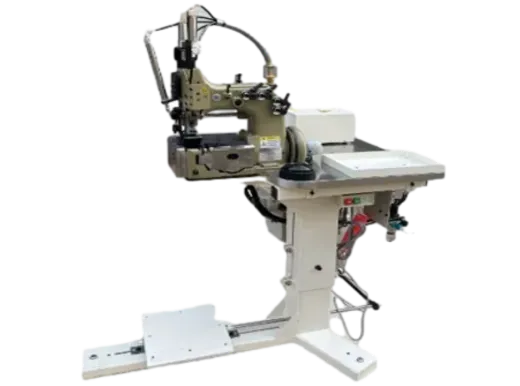Comparative Analysis of Prices for Various Types of Industrial Overlock Sewing Machines Today
The Economic Landscape of Industrial Overlocker Prices
In the realm of textile manufacturing, efficiency, speed, and precision are paramount. One of the key machines that enhance production capabilities is the industrial overlocker (serger) sewing machine. This equipment plays a vital role by providing clean, professional seams while simultaneously trimming excess fabric. However, potential buyers often find themselves navigating a wide range of prices associated with industrial overlockers. Understanding the factors that influence these prices can help businesses make informed purchasing decisions.
Understanding Industrial Overlockers
Industrial overlockers are specialized sewing machines used primarily in the fashion and textile industry. They typically operate with multiple threads and offer various stitch options, making them essential for constructing garments, finishing raw edges, and creating decorative seams. The ability to work with different fabric types—such as knit, woven, and stretch fabrics—without compromising quality adds to their versatility.
Price Range Overview
The prices of industrial overlockers can vary substantially based on several factors, including brand, features, build quality, and the type of machine. Entry-level models suitable for small businesses or home-based tailors may start at around $300 to $1,000. These machines provide basic functionalities and are ideal for low to moderate usage.
Mid-range industrial overlockers, catering to established businesses with higher production needs, typically range from $1,000 to $5,000. These machines often come equipped with advanced features such as differential feed mechanisms, adjustable stitch lengths, and multiple presser feet options. For high-volume production environments, premium models priced between $5,000 and $15,000 exist. These machines are built for durability and efficiency, capable of handling the rigorous demands of large-scale textile operations.
Factors Influencing Prices
Several factors contribute to the pricing of industrial overlockers
1. Brand Reputation Established brands with a history of reliability and quality often command higher prices. Consumers are typically willing to invest more in machines from trusted manufacturers.
industrial overlocker prices

2. Features and Specifications Machines with advanced functionalities—such as multiple stitch types, automated settings, or enhanced speed capabilities—tend to be more expensive.
3. Build Quality and Durability Overlockers designed for heavy-duty use, featuring robust components, often come at a premium. These machines are engineered to withstand continuous operation, reducing long-term maintenance costs.
4. Market Demand Economic factors and trends in the fashion industry can influence the demand for industrial overlockers. During periods of economic growth, increased production needs can drive prices upward.
5. Technology Advancement As technology evolves, newer models may come equipped with innovative features such as digital controls, making older models less desirable and relatively cheaper.
Making the Right Investment
When considering the purchase of an industrial overlocker, businesses should evaluate their specific needs and production goals. It is crucial to strike a balance between quality and price. Investing in a higher-quality machine may yield better long-term returns given its increased efficiency and reduced maintenance issues.
Furthermore, prospective buyers should research different brands and models, considering not only the initial purchase price but also aspects such as warranty, customer service, and access to parts and repair services. Comparing user reviews and seeking recommendations from industry peers can also provide valuable insights into the best pick for their operational requirements.
Conclusion
In summary, industrial overlocker prices can vary widely influenced by factors such as brand, features, and market conditions. Whether it’s for a small sewing shop or a large-scale textile manufacturer, understanding these complexities can aid in making informed purchasing decisions. By carefully evaluating needs and options, businesses can find an industrial overlocker that enhances their productivity and quality of output while fitting within their budget.
-
Industrial Cylinder Arm Sewing Machine: Revolutionizing Heavy-Duty SewingNewsJul.28,2025
-
Cylinder Arm Sewing Machine: Perfect for Special Sewing ApplicationsNewsJul.28,2025
-
Cylinder Bed Sewing Machine: Essential for Sewing Complex MaterialsNewsJul.28,2025
-
Heavy Duty Sewing Machine: The Essential Tool for Industrial ApplicationsNewsJul.28,2025
-
Computerized Pattern Sewing Machine: Revolutionizing Precision StitchingNewsJul.28,2025
-
Heavy Duty Industrial Sewing Machine: Power Meets PrecisionNewsJul.28,2025
-
Leather Sewing Machine: The Industrial Standard for Tough MaterialsNewsJul.18,2025





























